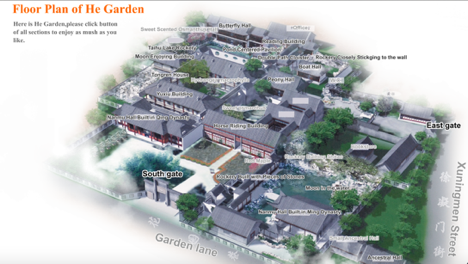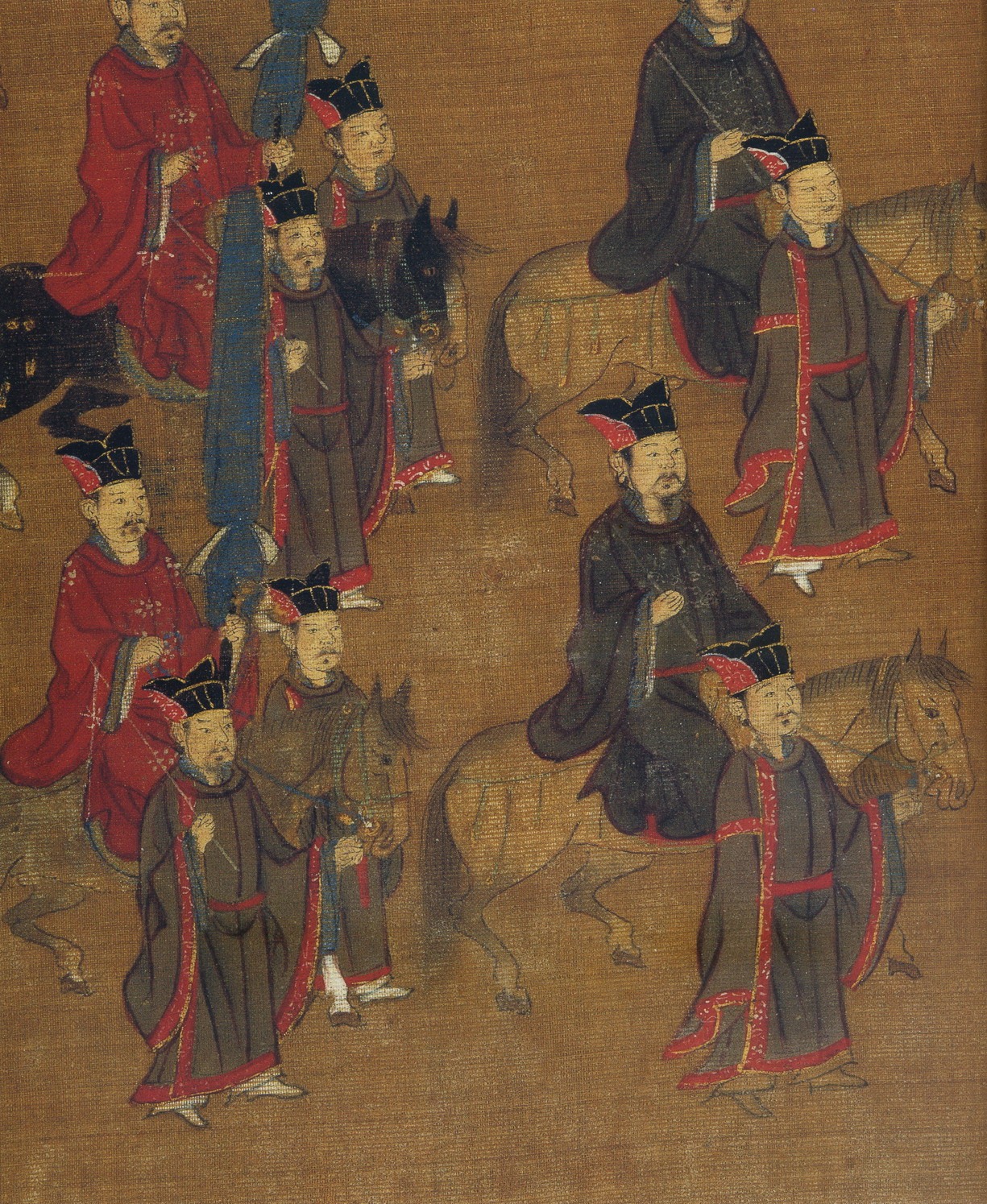|
Yangzhou
Yangzhou is a prefecture-level city in central Jiangsu Province, East China. Sitting on the north bank of the Yangtze, it borders the provincial capital Nanjing to the southwest, Huai'an to the north, Yancheng to the northeast, Taizhou, Jiangsu, Taizhou to the east, and Zhenjiang across the river to the south. Its population was 4,559,797 at the 2020 Chinese census, 2020 census and its urban area is home to 2,635,435 inhabitants, including three urban districts, currently in the agglomeration. Historically, Yangzhou was one of the wealthiest cities in China, known at various periods for its great merchant families, poets, artists, and scholars. Its name (lit. "Rising Prefecture") refers to its former position as the capital of the ancient Yangzhou (ancient China), Yangzhou prefecture in Administration of territory in dynastic China, imperial China. Yangzhou was one of the first cities to benefit from one of the earliest World Bank loans in China, used to construct Yangzhou therma ... [...More Info...] [...Related Items...] OR: [Wikipedia] [Google] [Baidu] |
Yangzhou (ancient China)
Yangzhou, Yangchow or Yang Province was one of the Nine Provinces of ancient China mentioned in historical texts such as the ''Yu Gong, Tribute of Yu'', ''Erya'' and ''Rites of Zhou''. Name There are four different theories regarding the origin of the name "Yangzhou": * Yangzhou's etymological root is related to trees. The ''Chunqiu Yuan Ming Bao'' recorded, "The soil is damp and moist, Populus, poplars and willows thrive there, that is how the name originated." Shen Kuo (1031–1095) wrote that "Yangzhou is suitable for poplars (楊; ''yang'') and Jingzhou (ancient China), Jingzhou is suitable for brambles (荊; ''jing'')." Li Dou (fl. 18th century) wrote that "Yangzhou is suitable for poplars (楊; ''yang'') and those growing on dykes are even larger. There is one (poplar tree) every five steps and two every ten steps, in pairs and threes they stand in gardens." Yangzhou is also sometimes written in Chinese as 楊州 instead of 揚州; 楊 means "poplar". * The origin of the ... [...More Info...] [...Related Items...] OR: [Wikipedia] [Google] [Baidu] |
Slender West Lake
Slender West Lake, also known by its Chinese name Shouxihu and by other names, is a scenic lake in Hanjiang District in central Yangzhou, China. The lake developed from the city moats of Tang-era Yangzhou. During the Qing dynasty, its banks were the site of numerous estates for the area's wealthy officials and salt merchants. The lake and some of its attractions have been restored as a national park and AAAAA tourist attraction, requiring a ticket for admission and open only from 7 am to 6 pm. Names In medieval and early modern China, the present Slender West Lake was described as a stretch of river variously known as Paoshan, Changchun, Baoyang, or Baozhang Creek. The area was popularly known as the Slender West Lake by the late 17th century, when the name was recorded in the treatise ''Yángzhōu Gǔchuī Cíxù'' compiled by Wu Qi ''Wú Qǐ''; 16191694). It was further popularized in the 1736 poem "On Baozhang Creek" (, ''Yǒng Bǎozhàng Hé'') written by the ... [...More Info...] [...Related Items...] OR: [Wikipedia] [Google] [Baidu] |
Jiangsu
Jiangsu is a coastal Provinces of the People's Republic of China, province in East China. It is one of the leading provinces in finance, education, technology, and tourism, with its capital in Nanjing. Jiangsu is the List of Chinese administrative divisions by area, third smallest, but the List of Chinese administrative divisions by population, fifth most populous, with a population of 84.75 million, and the List of Chinese administrative divisions by population density, most densely populated of the 22 provinces of the People's Republic of China. Jiangsu has the highest GDP per capita and second-highest GDP of Chinese provinces, after Guangdong. Jiangsu borders Shandong in the north, Anhui to the west, and Zhejiang and Shanghai to the south. Jiangsu has a coastline of over along the Yellow Sea, and the Yangtze flows through the southern part of the province. Since the Sui dynasty, Sui and Tang dynasty, Tang dynasties, Jiangsu has been a national economic and commercial center ... [...More Info...] [...Related Items...] OR: [Wikipedia] [Google] [Baidu] |
Hanjiang District, Yangzhou
Hanjiang District is one of the three District of China, districts of Yangzhou, Jiangsu provinces of China, Province, in eastern China. It is one of the two districts (along with Guangling District) that divide the prefecture's urban area, urbanized core. It includes roughly the western half of Yangzhou's central city and adjacent suburbs. The Yangtze River and the Grand Canal of China serve as the district's principal southern and eastern borders. In the past, the northern part of Yangzhou's main urban area constituted the separate Weiyang District, Yangzhou, Weiyang District but, in late 2011, Weiyang District was abolished and merged into Hanjiang. Administrative divisions Hanjiang District is divided to 10 subdistricts, 10 towns, and 3 townships: ;10 Subdistricts: ;10 Towns: ;3 Townships: *Pingshan Township, Jiangsu, Pingshan () *Shuangqiao, Jiangsu, Shuangqiao () *Chengbei Township, Jiangsu, Chengbei () Gallery File:Yangzhou - walking south from Baozhang Lake - CIMG3223 ... [...More Info...] [...Related Items...] OR: [Wikipedia] [Google] [Baidu] |
Five-Pavilion Bridge
The Five-Pavilion Bridge, also known as the Lotus Bridge and by other names, is a covered stone arch footbridge in the Slender West Lake National Park in Hanjiang District, Yangzhou, in Jiangsu, China. It is one of the Four Bridges in Misty Rain, one of the 24 Views of Yangzhou under the Qing, and has become a landmark of the city. Names The bridge is called the "Five-Pavilion Bridge". Its alternative name, "Lotus Bridge" or "Lotus Blossom Bridge", is a translation of the bridge's original Chinese name, either named for the Lotus Blossom Dyke that the bridge connects to on its southern side or for a supposed resemblance of its pavilions to the petals of a lotus flower. History The bridge was constructed in 1757. (Qianlong 22), connecting the residences on the north bank of the lake to the back of the Temple of the Lotus Mind to the south. Its construction was funded by local salt merchants to welcome the Qianlong Emperor of the Qing dynasty during his second southern tour of ... [...More Info...] [...Related Items...] OR: [Wikipedia] [Google] [Baidu] |
He Garden
He Garden () is a park in Yangzhou, Jiangsu province. He Family Garden also known as “Jixiao Villa” is the last but best work among the private gardens in Yangzhou. Located on Xuningmen Street, it is a heritage site under state protection and a national AAAA- rated tourist attraction. It is the best-known private garden of the late Qing dynasty, and is one of 20 first-class key parks in China. As the development of Yangzhou's tourism, He Garden will be a must-see place for tourists who travel in Yangzhou. http://en.he-garden.net/abouthy.html Name The name "He Garden" is from a poem by Tao Yuanming. The original owner's last name was also "He". Family Affairs & National Affairs About the Master Born in 1835, He Zhidao (a 19th-century Chinese envoy to France) had been appointed as the governor of Hangyang Prefecture, Huang-zhou Prefecture and De`an Prefecture, and supervisor of Jianghan Barrier. He was also awarded to be a top ranking official of the consulting ministe ... [...More Info...] [...Related Items...] OR: [Wikipedia] [Google] [Baidu] |
Nanjing
Nanjing or Nanking is the capital of Jiangsu, a province in East China. The city, which is located in the southwestern corner of the province, has 11 districts, an administrative area of , and a population of 9,423,400. Situated in the Yangtze River Delta, Nanjing has a prominent place in Chinese history and Chinese culture, culture, having served as the historical capitals of China, capital of various Dynasties in Chinese history, Chinese dynasties, kingdoms and republican governments dating from the 3rd century to 1949, and has thus long been a major center of culture, education, research, politics, economy, transport networks and tourism, being the home to Port of Nanjing, one of the world's largest inland ports. The city is also one of the fifteen sub-provincial city, sub-provincial cities in the People's Republic of China's Administrative divisions of the People's Republic of China, administrative structure, enjoying jurisdictional and economic autonomy only slightly les ... [...More Info...] [...Related Items...] OR: [Wikipedia] [Google] [Baidu] |
Dongguan Street (Yangzhou)
Dongguan Street is an ancient street in Dongguan Subdistrict, Guangling District, Yangzhou Yangzhou is a prefecture-level city in central Jiangsu Province, East China. Sitting on the north bank of the Yangtze, it borders the provincial capital Nanjing to the southwest, Huai'an to the north, Yancheng to the northeast, Taizhou, Jiangsu, ..., Jiangsu, China. Location It is surrounded by many building so that it's discreet but it has two grand gates standing in two ends of the street. Dongguan Street is east of the Grand Canal and west of the Guoqing Road (国庆路, National Day Road). Introduction It is 1122 meters long and paved with slates. In the past, it was not only the water and land transportation route in Yangzhou, but also a commercial and cultural center. Dongguan Street is linked to the Dongquanmen. Two blocks have been combined to plan, renovate, develop and become the highlights of Yangzhou. There are many shops here that are old and a large number ... [...More Info...] [...Related Items...] OR: [Wikipedia] [Google] [Baidu] |
Yangtze
The Yangtze or Yangzi ( or ) is the longest river in Eurasia and the third-longest in the world. It rises at Jari Hill in the Tanggula Mountains of the Tibetan Plateau and flows including Dam Qu River the longest source of the Yangtze, in a generally easterly direction to the East China Sea. It is the fifth-largest primary river by discharge volume in the world. Its drainage basin comprises one-fifth of the land area of China, and is home to nearly one-third of the country's population. The Yangtze has played a major role in the history, culture, and economy of China. For thousands of years, the river has been used for water, irrigation, sanitation, transportation, industry, boundary-marking, and war. The Yangtze Delta generates as much as 20% of China's GDP, and the Three Gorges Dam on the Yangtze is the largest hydro-electric power station in the world. In mid-2014, the Chinese government announced it was building a multi-tier transport network, comprising railway ... [...More Info...] [...Related Items...] OR: [Wikipedia] [Google] [Baidu] |
Administration Of Territory In Dynastic China
The administration of territory in dynastic China is the history of practices involved in governing the land from the Qin dynasty (221–206 BC) to the Qing dynasty (1644–1912). Administrative divisions in imperial China County The only level at which state officials actually governed the common people was the county level. Counties were coordinated by prefectures which had on average, about ten counties. Overseeing inspectors were sent out from the central government to oversee the work of the prefectures. During the Yuan dynasty, Yuan (1271–1368) and Ming dynasty, Ming (1368–1644) dynasties, these arrangements were solidified into permanent provinces. Funding for the local administration came from taxes collected while a portion was set aside for the central government. Counties (''xian'') originally meant "dependencies" ruled by vassals of royal blood. During the Qin dynasty (221–206 BC), they were coordinated by commanderies (''jun'') and expanded throughout the en ... [...More Info...] [...Related Items...] OR: [Wikipedia] [Google] [Baidu] |







